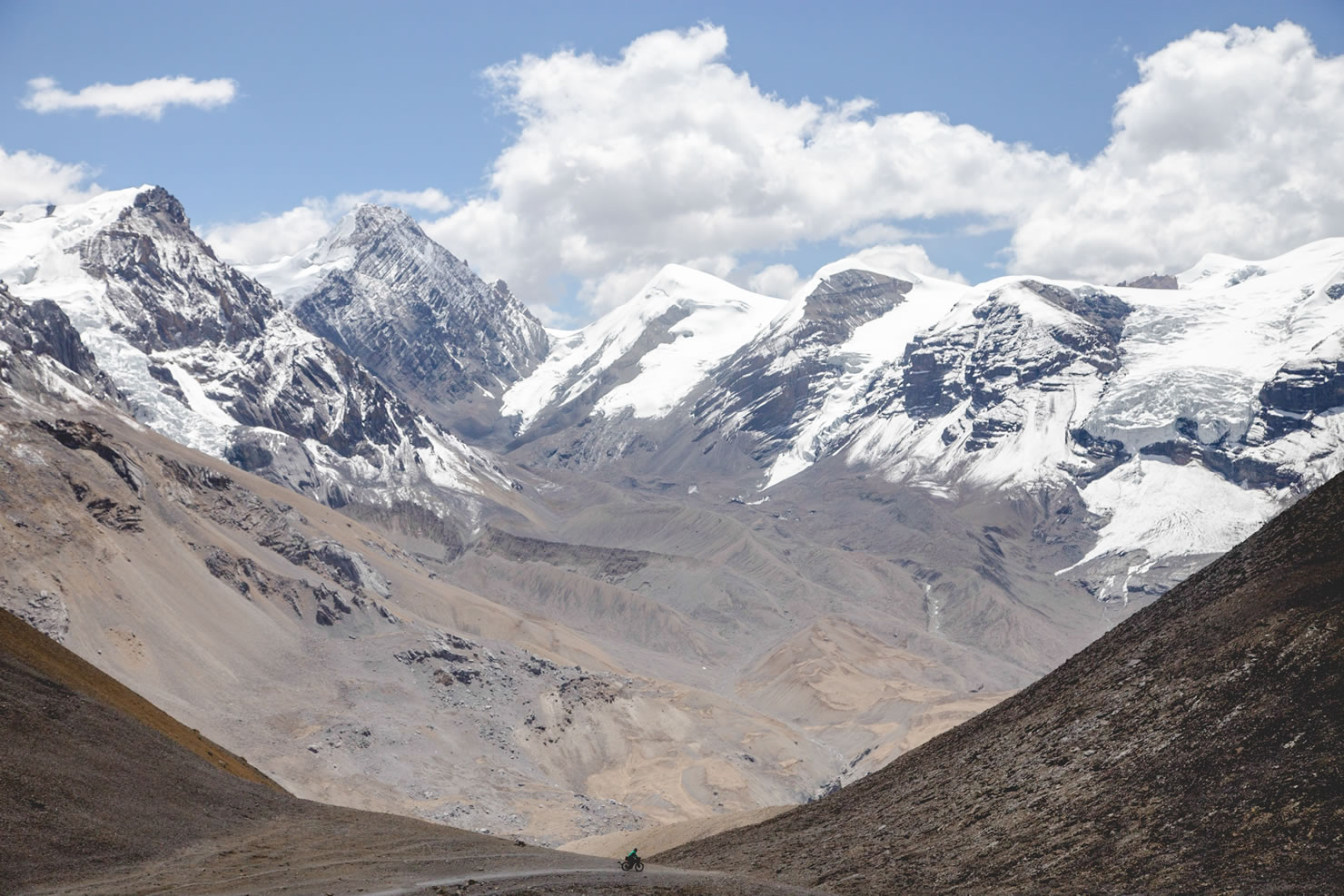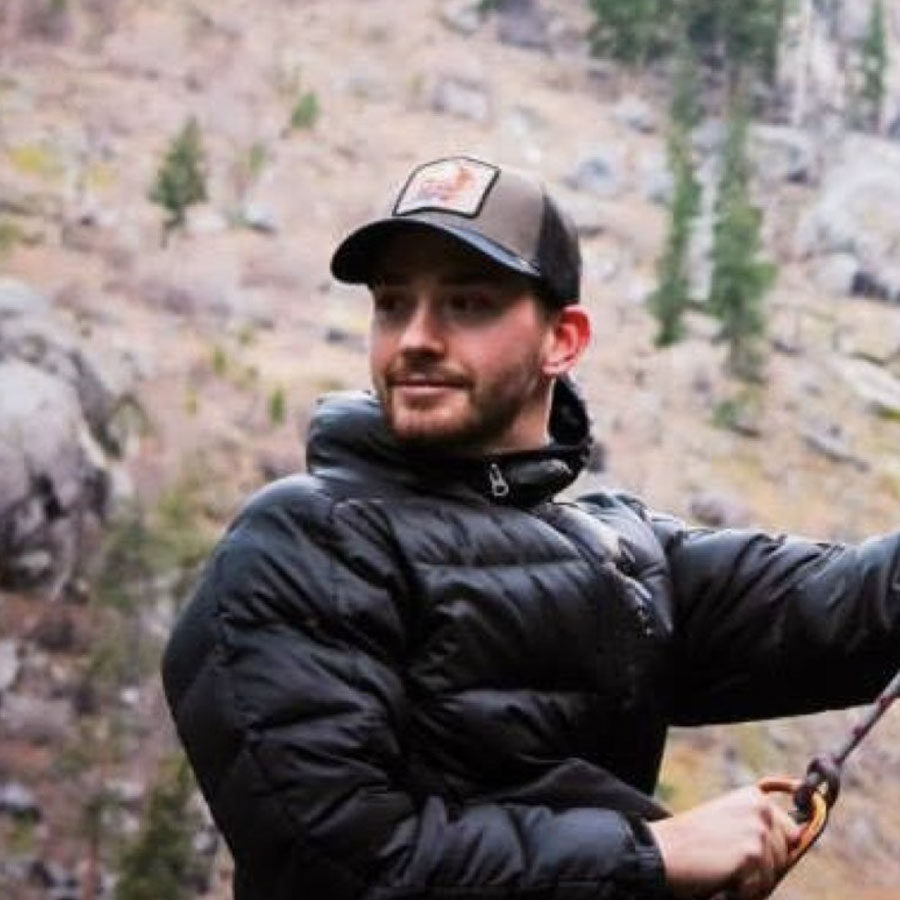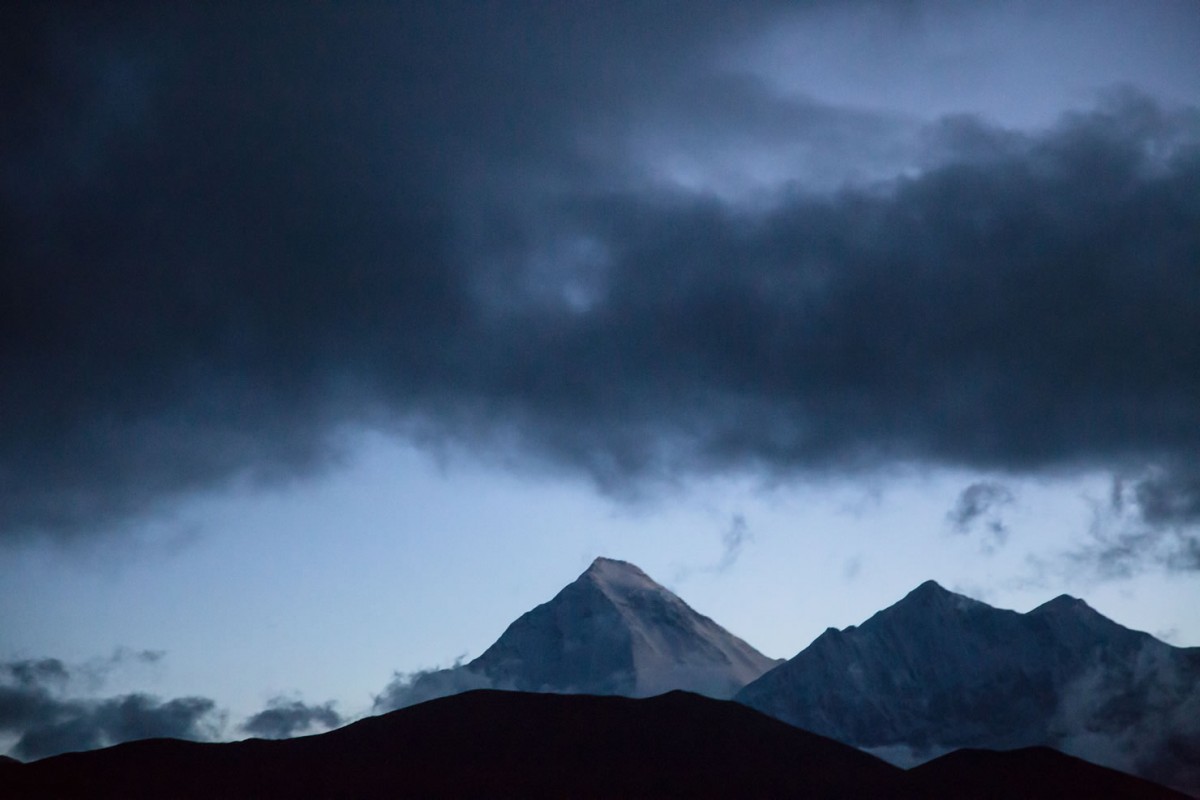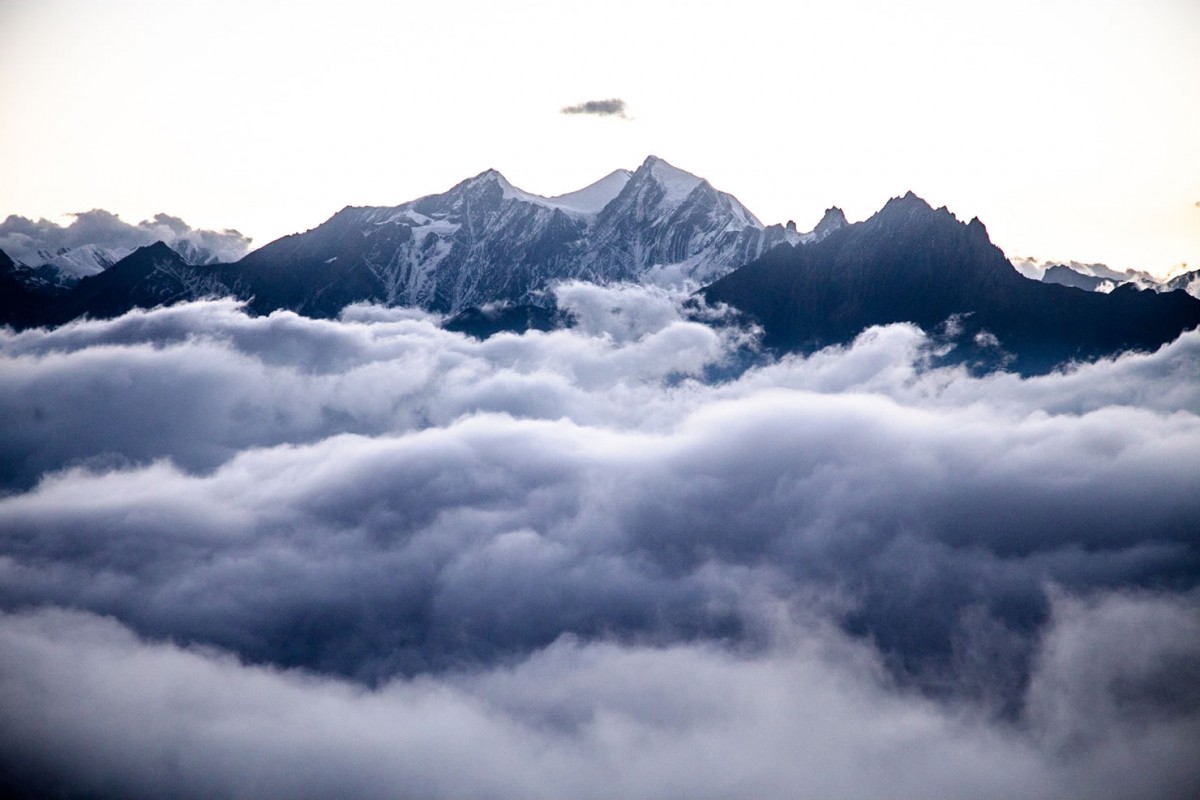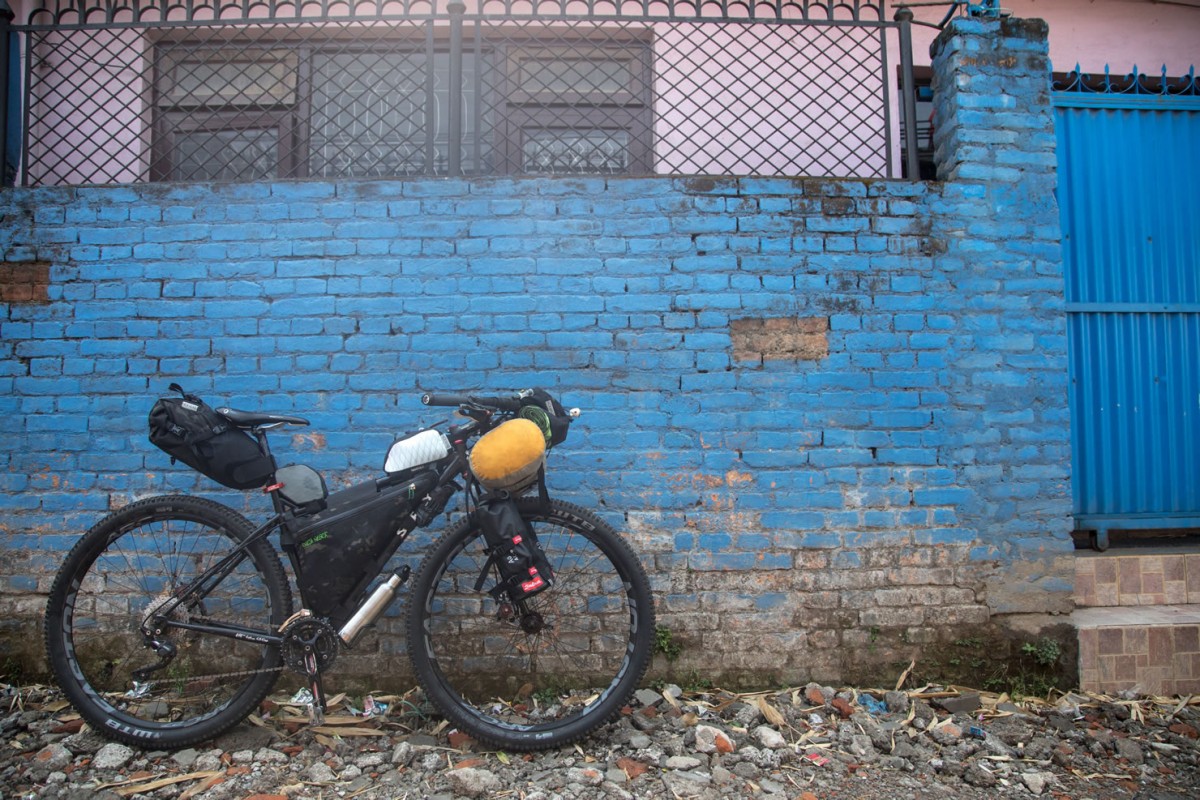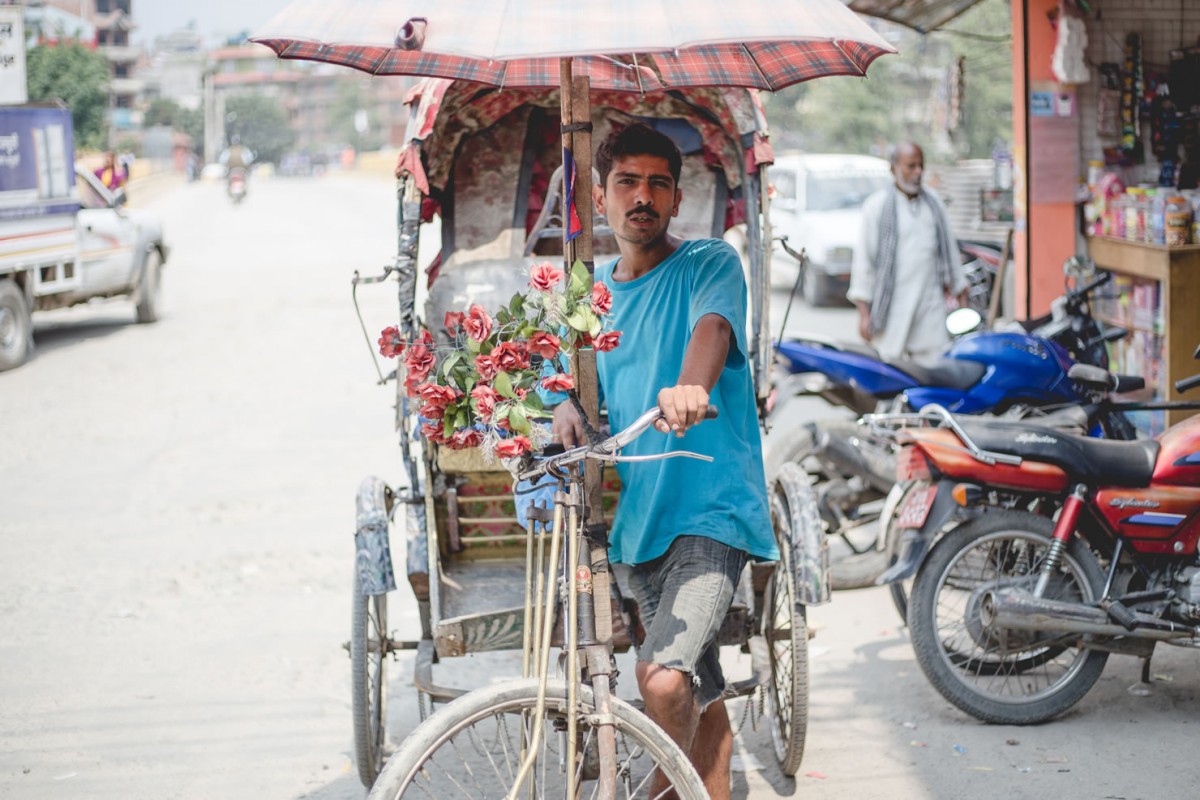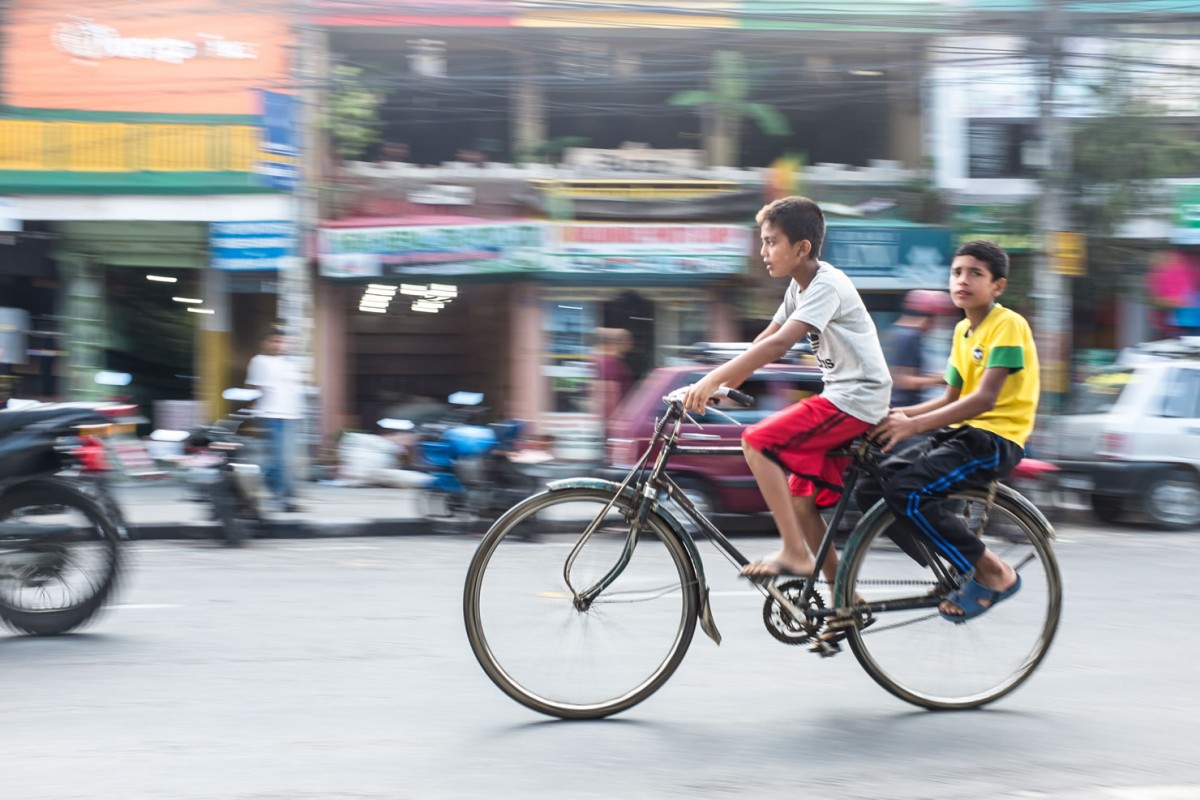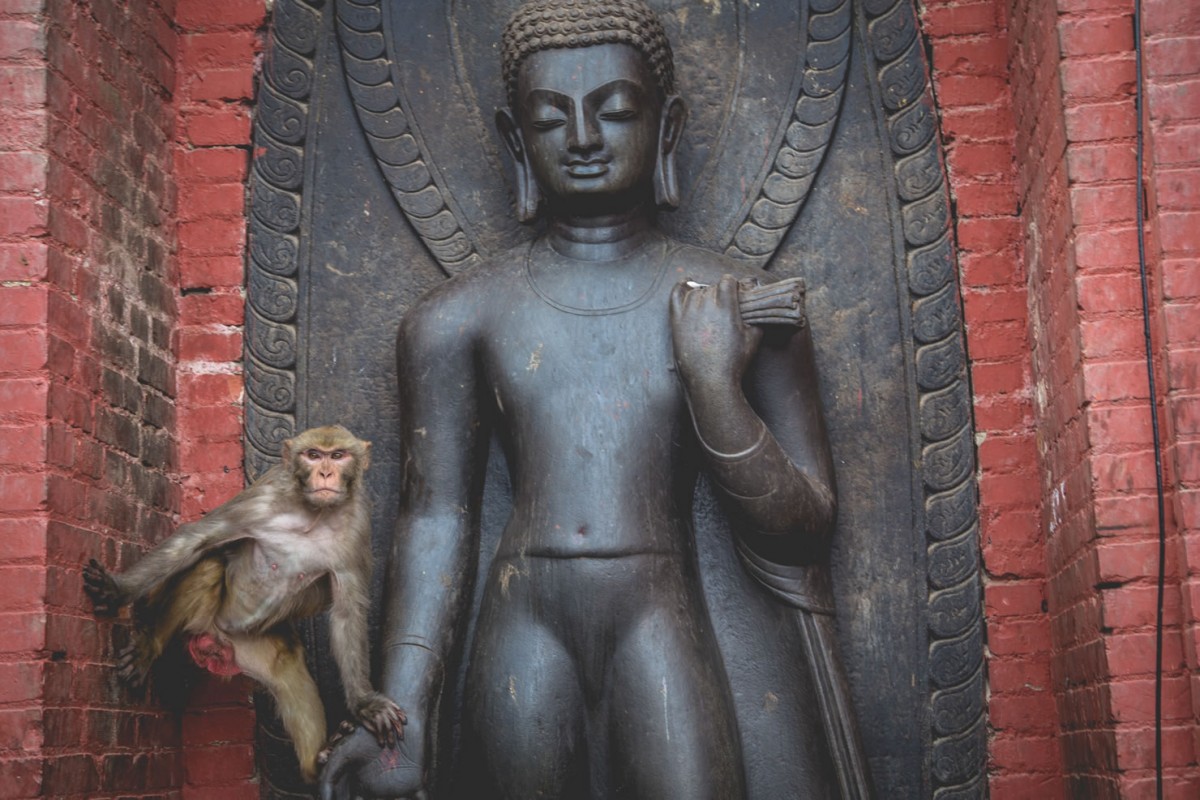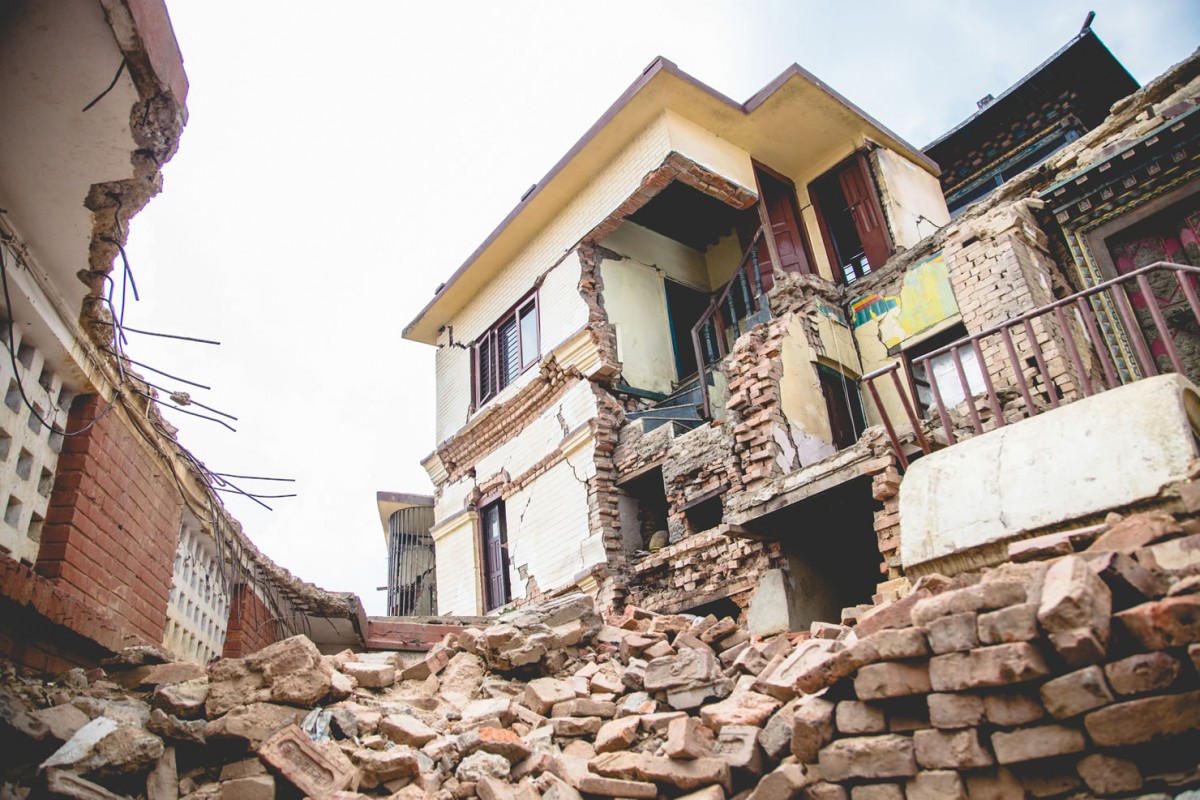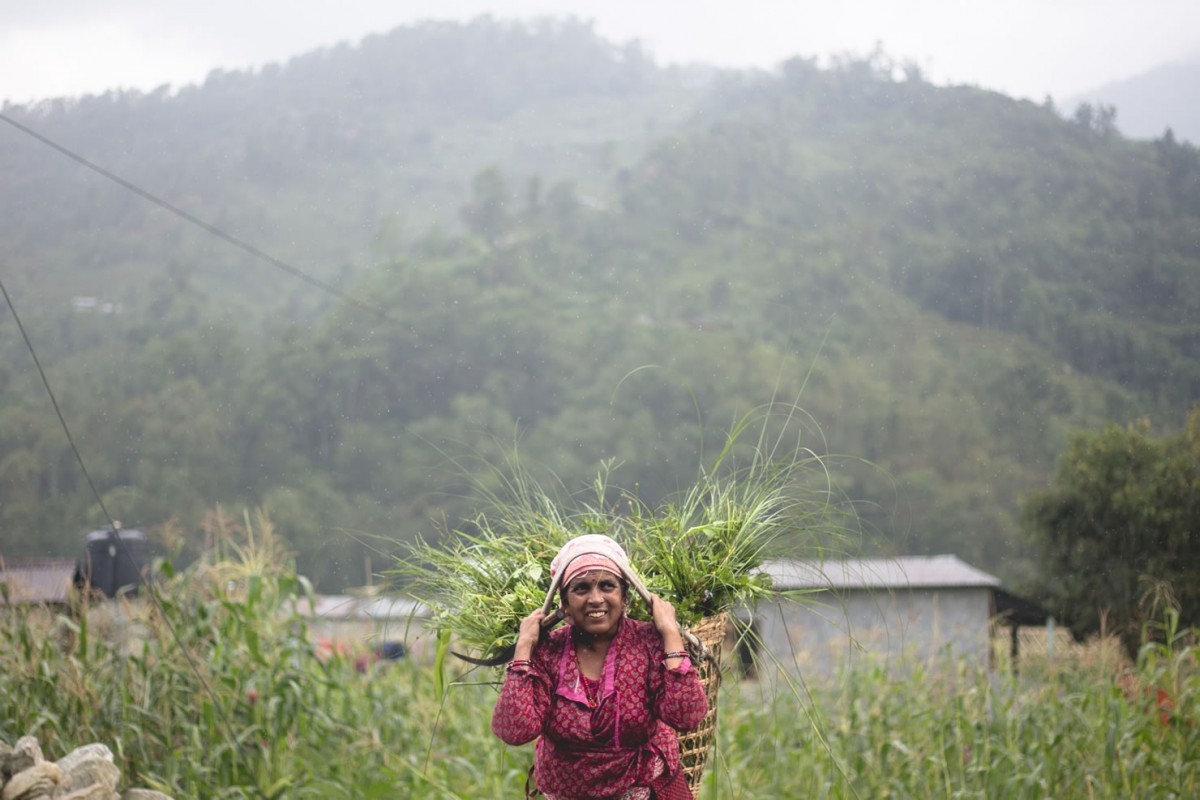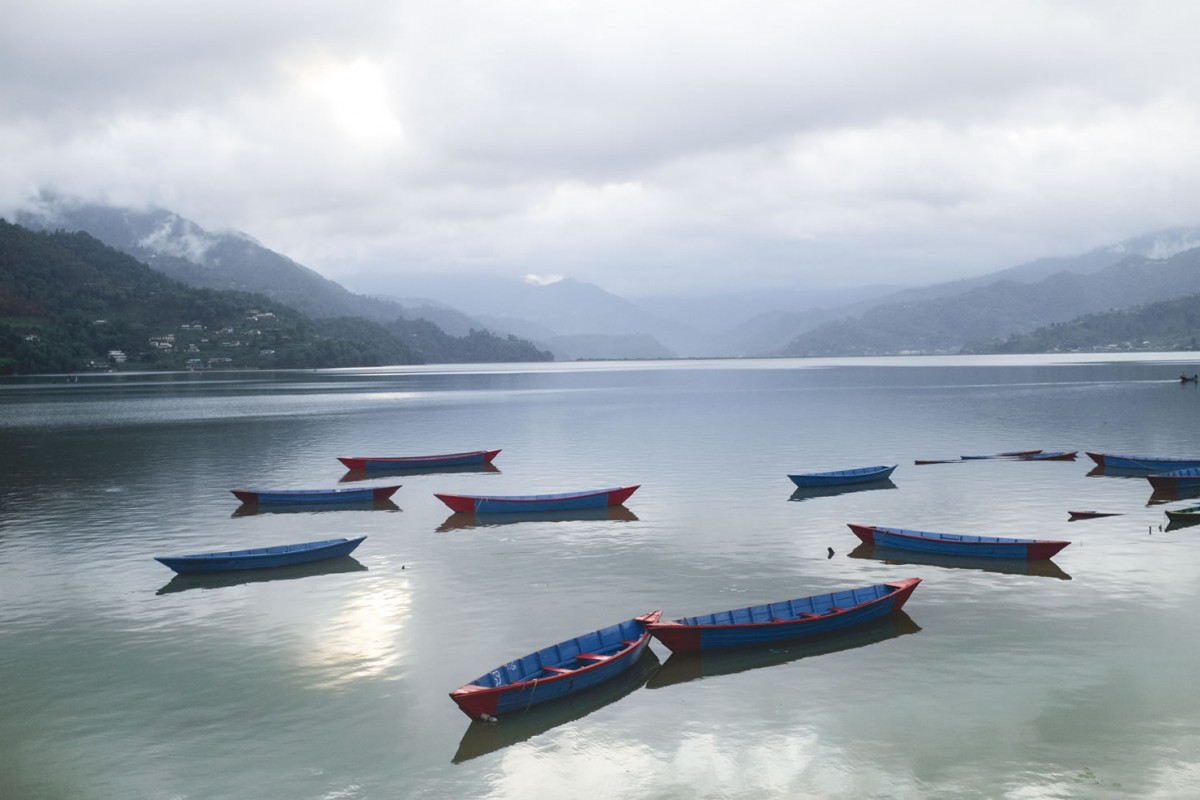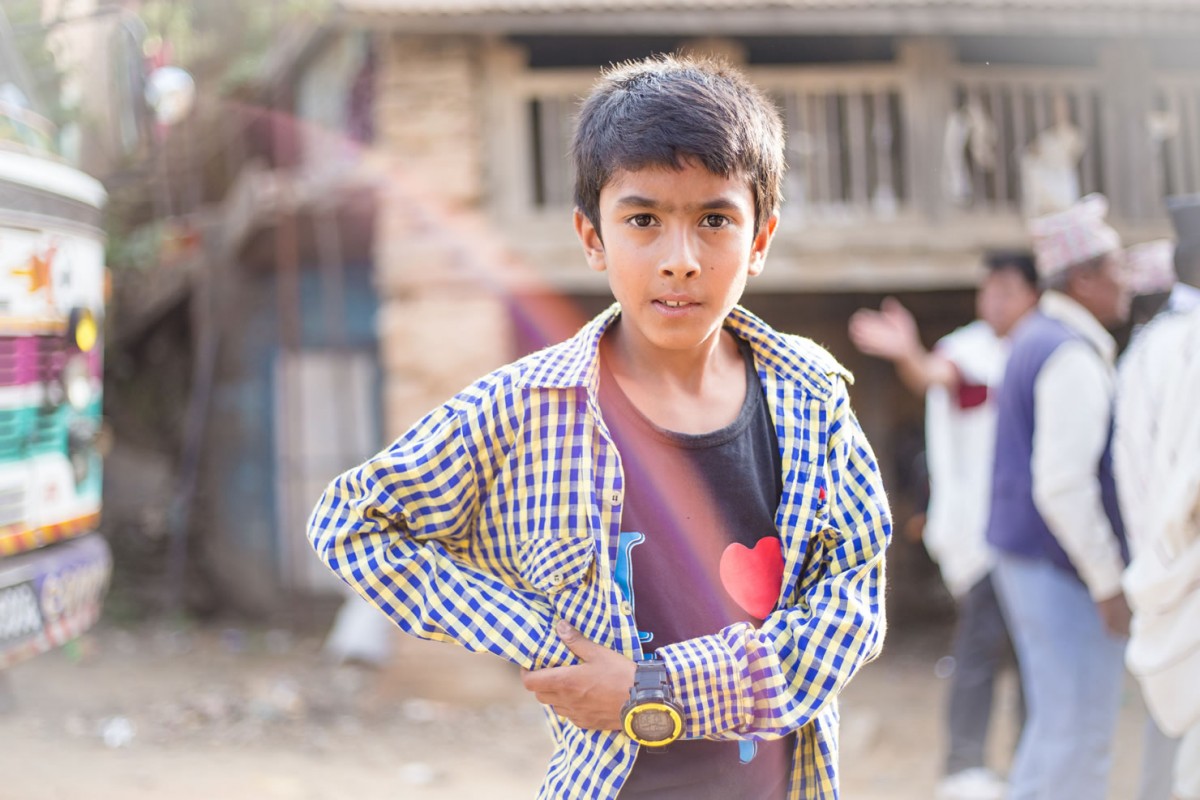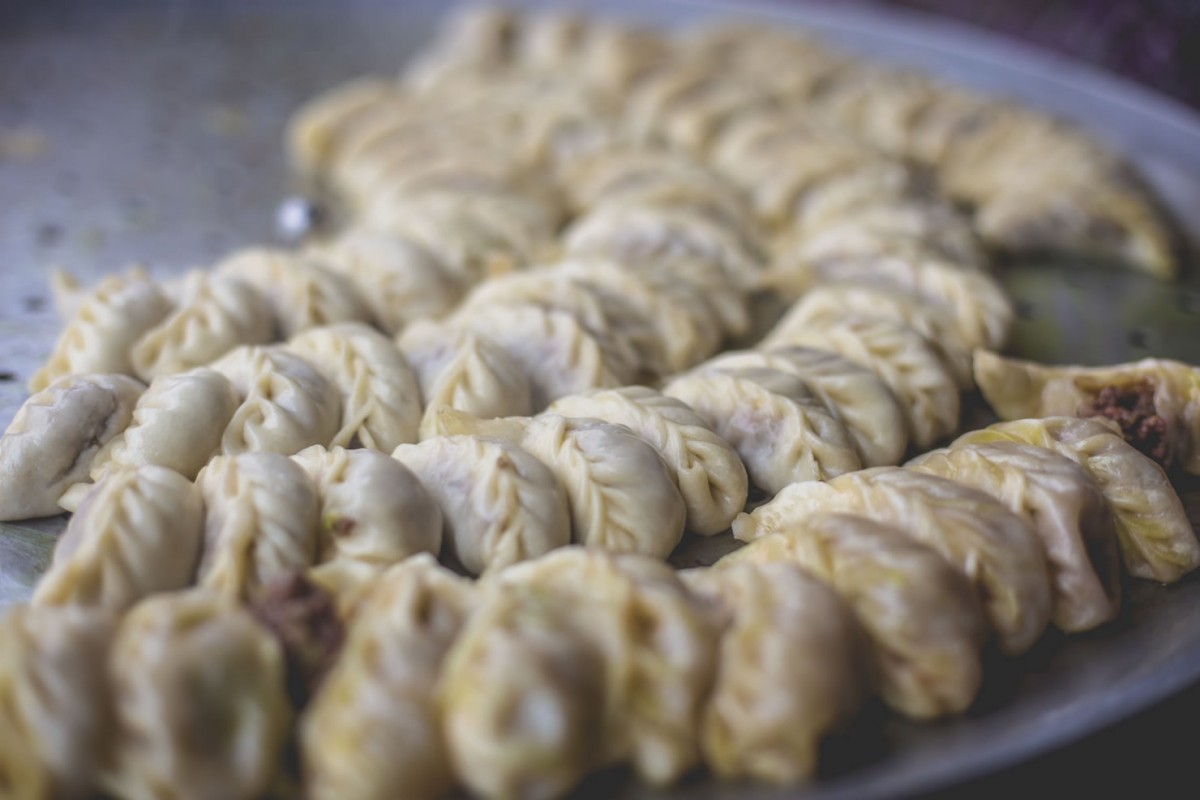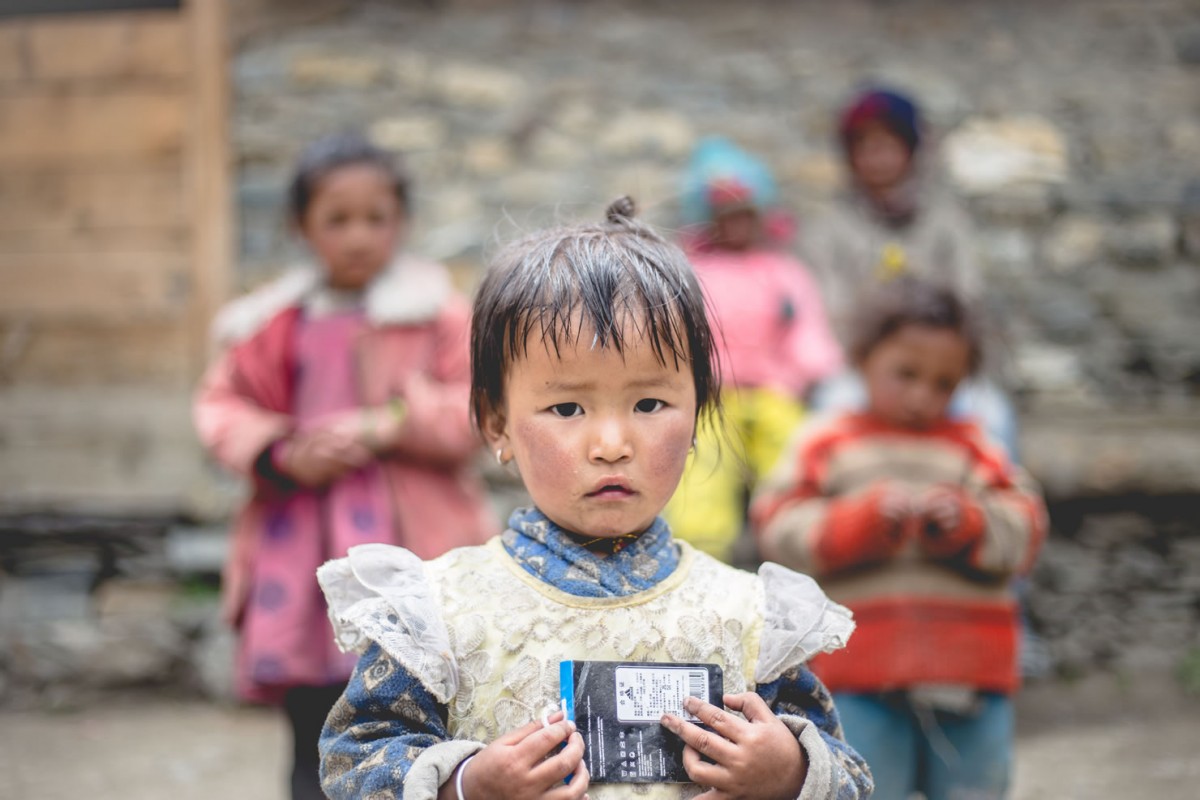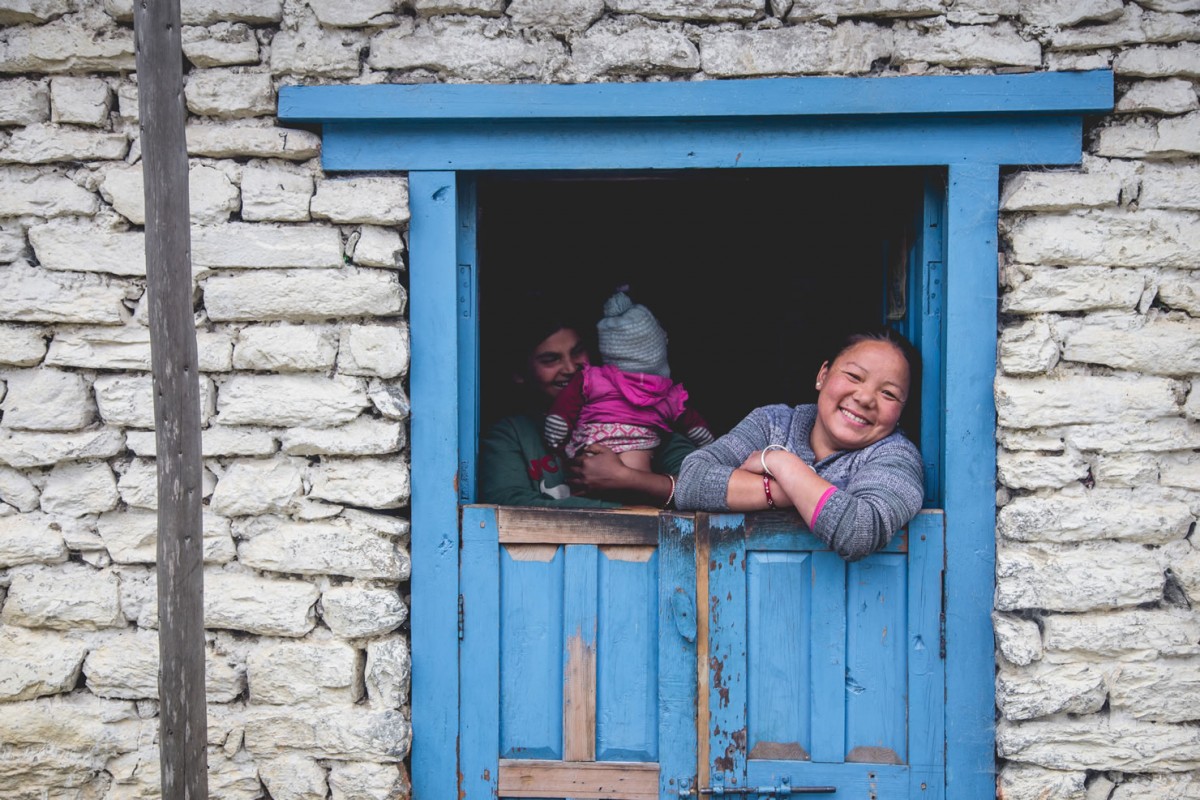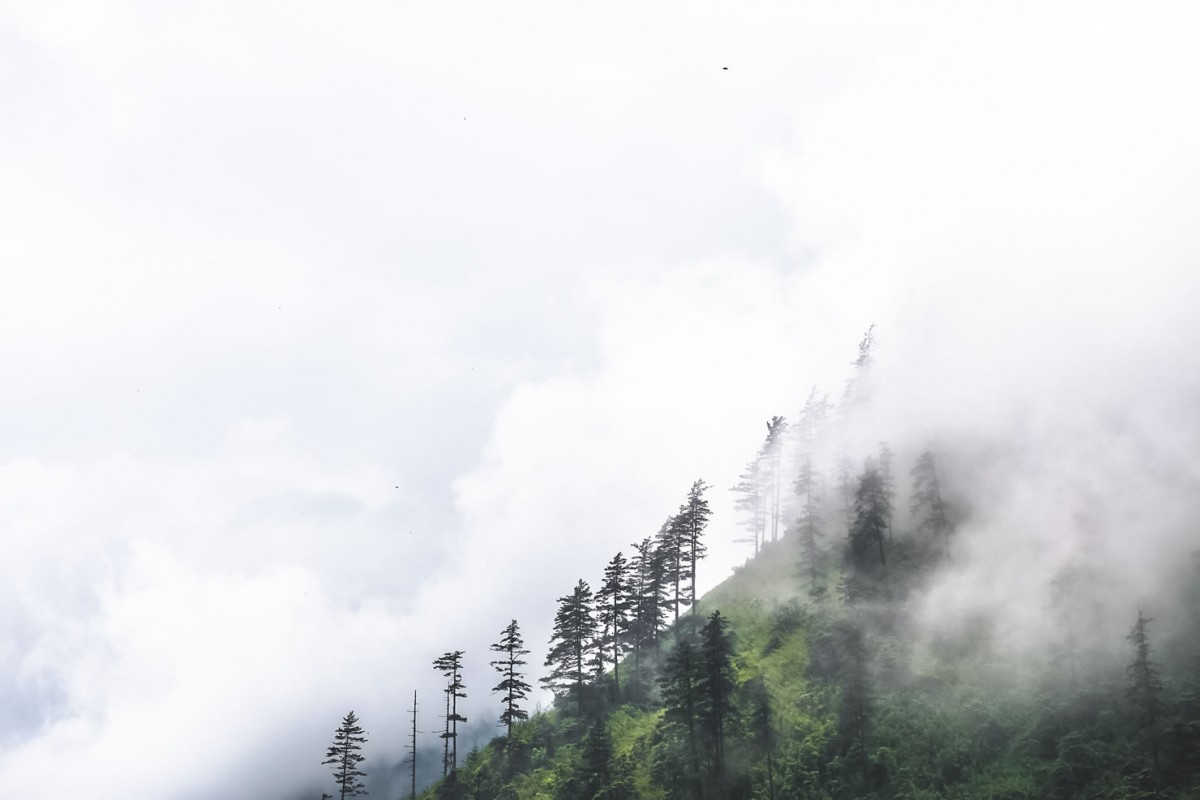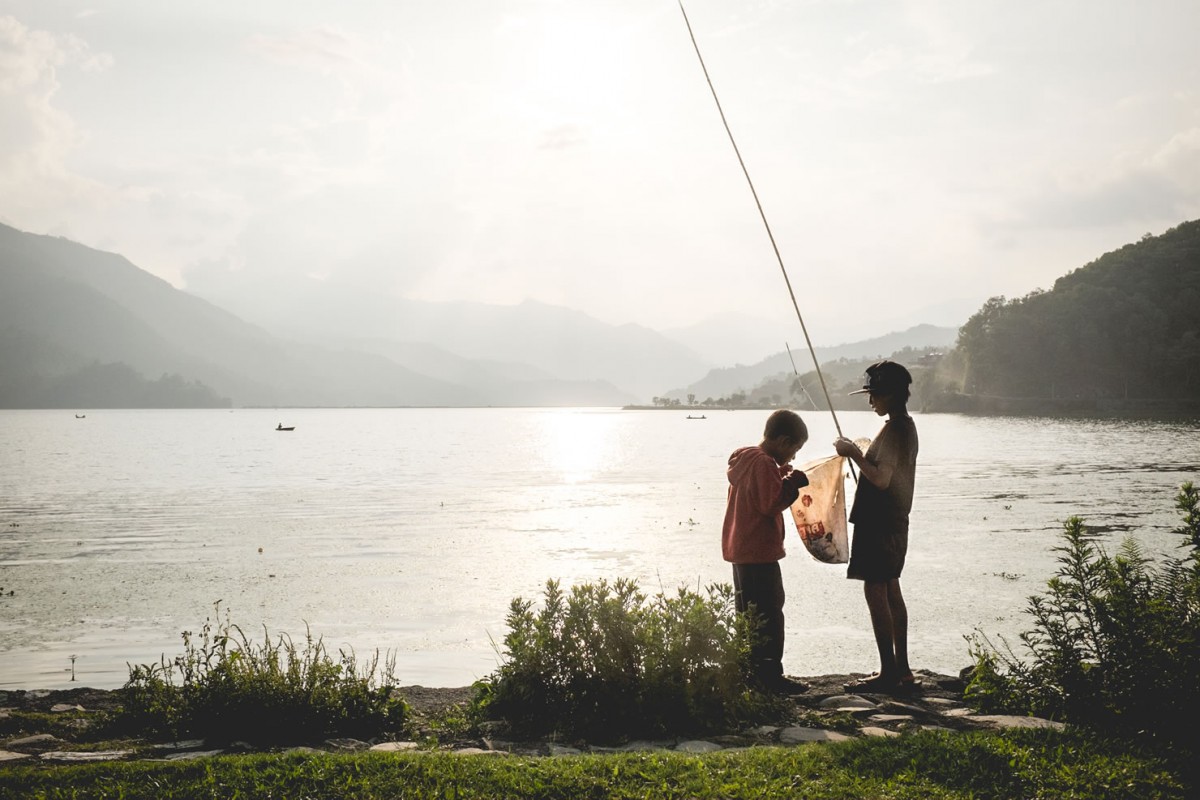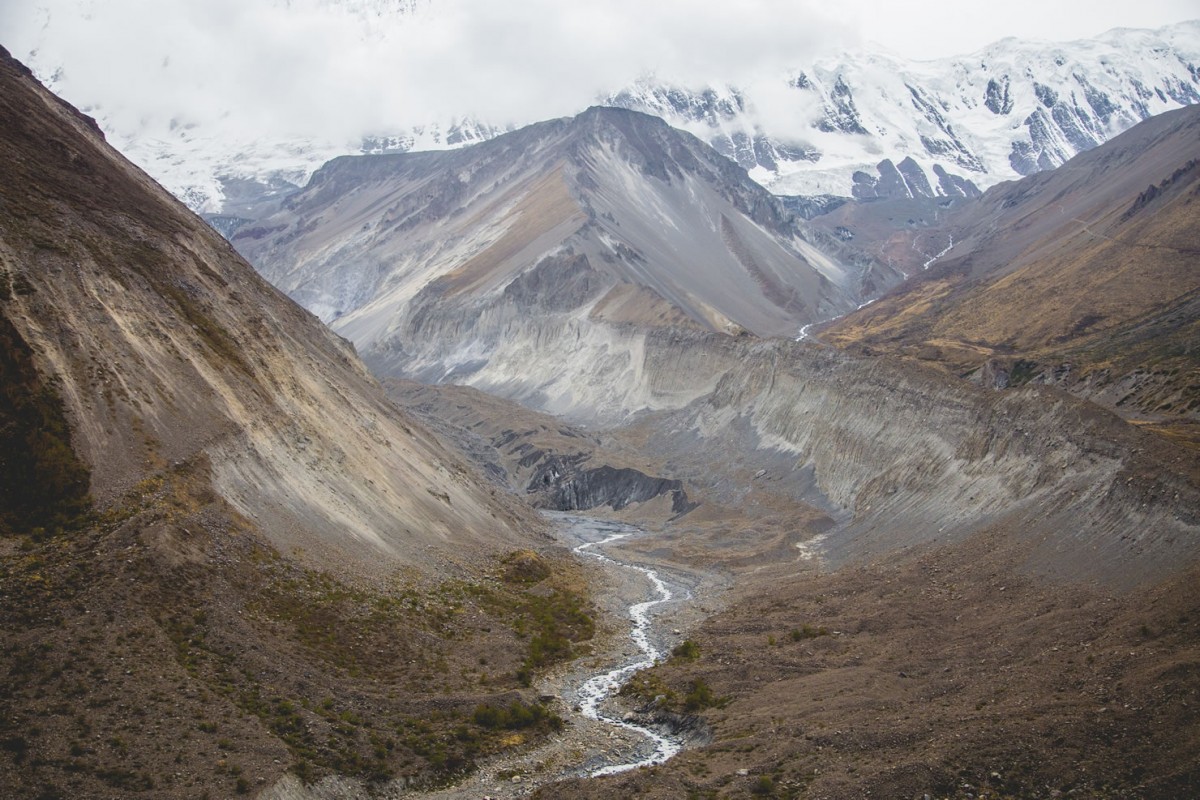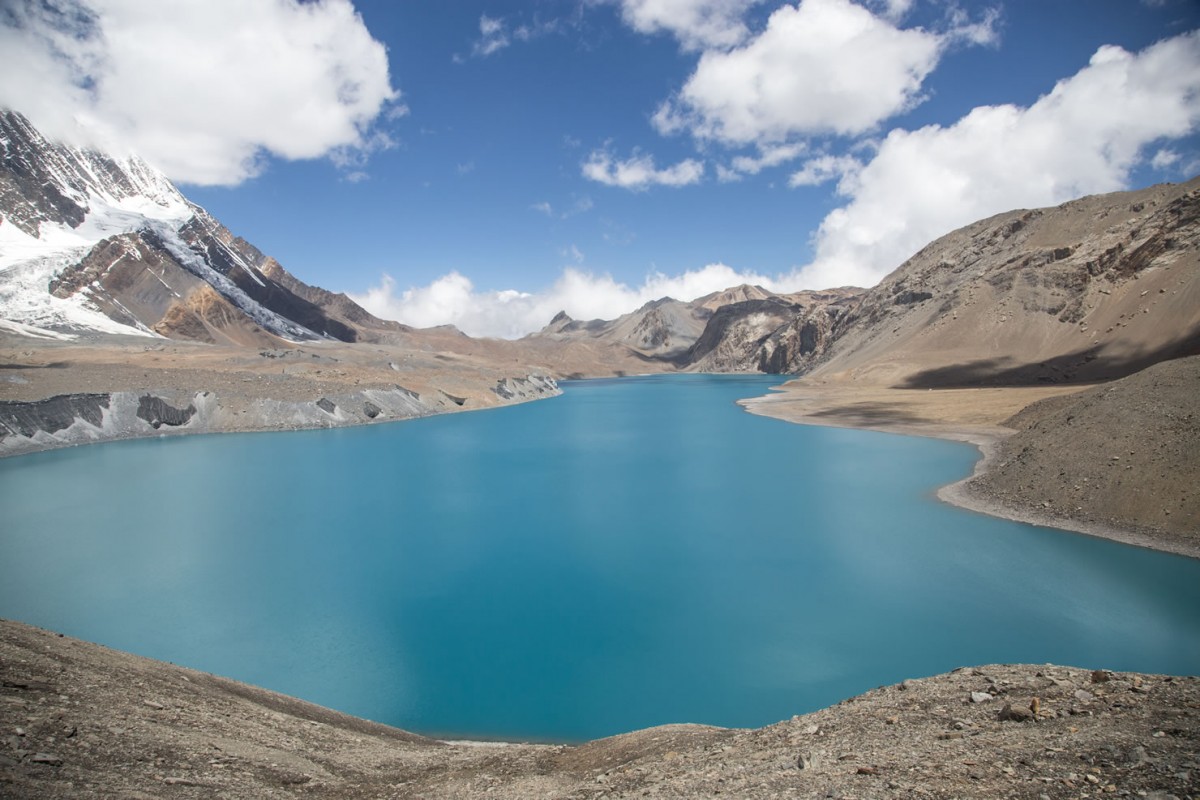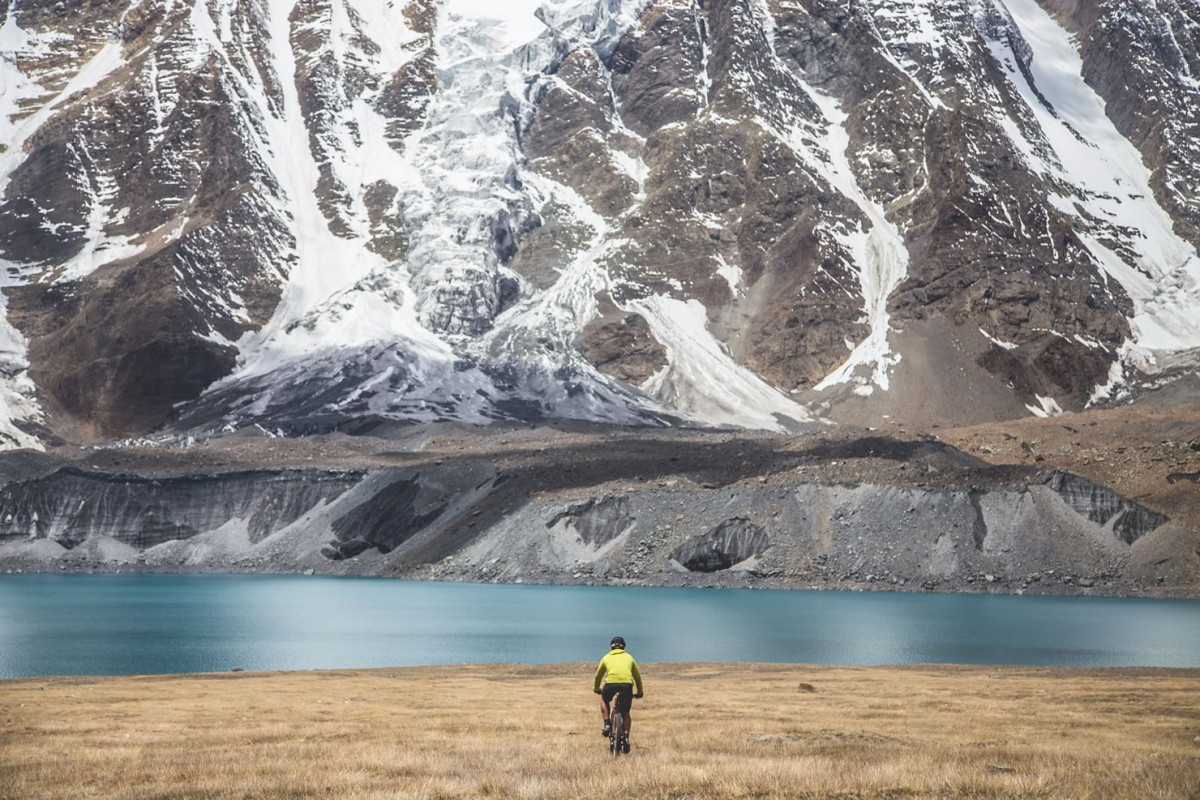Dal Bhat & Himalayan singletrack: Bikepacking the Annapurna
Share This
Drawn by the majesty of the Nepali Himalaya and its welcoming teahouses, Colt Felters sets out to pedal around the region’s infamous Annapurna Circuit. Once he’s found his bike…
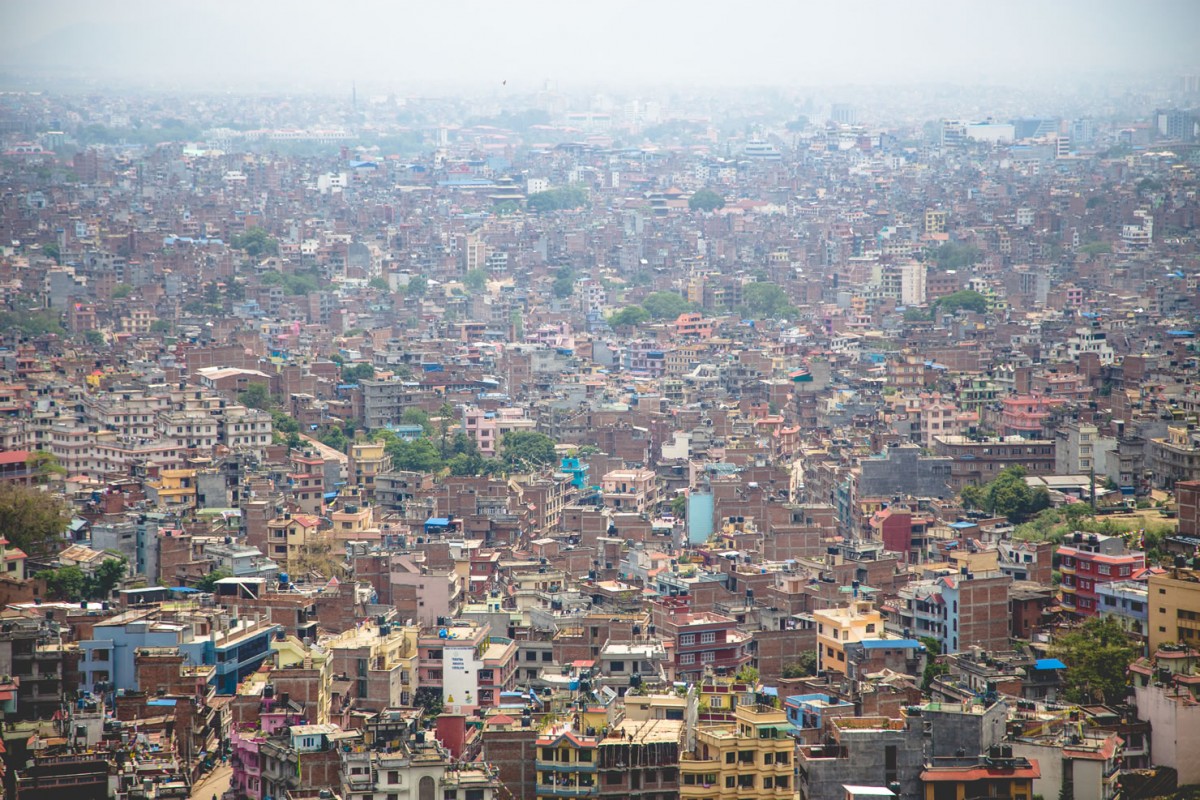
“I don’t normally give out this information for free, but you two look desperate.” said Jenny, owner of the Himalayan Singletrack Bikeshop, an establishment set along one of the crowded city streets of Nepal’s capital, Kathmandu. Which was just as well, because information was certainly what we needed. Planning for these types of trips normally happens months in advance, with mileage detailed by the day, gear lists analyzed tediously, and bicycles meticulously packed. But that’s not really my style – nor my riding companion Tavin’s, for that matter – making us especially grateful for her advice, and the route she helped us put together.
Our three week endeavor would take us further than just the typical two week Annapurna circuit, the route that drawn us to the Himalaya in the first place. For a start, we’d ride to the beginning of the circuit. The initial leg of our journey would follow a series of old jeep track from Kathmandu to Pokhara, across the tropical hill lands in the center of the country. The second would take us from Pokhara to the Annapurna Circuit itself – an infamous trekking route that we’d attempt to cycle and hike-a-bike our way round. Some 230 km in length, it’s a trail that’s nestled among some of the highest mountains in the world. Although more commonly hiked, Nepal is also a mecca for mountain bike travel, complete with simple teahouses that serve warm apple fritters on cold Himalayan nights.
First though, there was a small matter of our bikes. Or rather, lack thereof. That morning we had arrived in the Kathmandu International Airport, the air heavy with humidity. Standing around the baggage claim, we watched as the rest of the passengers picked up their bags and left the airport. Finally the only ones left, we stood staring at a lone bag on the carousel circling slowly round and round. Sweat dripped from our faces as we questioned the man at the lost baggage desk. “Excuse me, our bikes never arrived, Do you know when they might be here?” we asked. “Maybe two days time”, came the reply in broken English, to our dismay.
So rather than riding, our next couple of days were spent walking the bustling city streets of Kathmandu – sampling local cuisine and visiting awe-inspiring temples. Our attempts to contact the airport were initially thwarted, until we discovered that the multiple ‘STD’ signs throughout the city didn’t mean what they would have in the states. A ‘subscriber trunk dialing’ or STD shop helped us get ahold of the baggage claim at the airport to retrieve our steeds. Which we did, finally, relieved to be trading the honking traffic and smog filled air of the city for Shivapuri National park, where abandoned jeep tracks, quiet fruit stands, and friendly local villagers prevailed.
The transition into bike touring life happened slowly as we pedaled the tropical ‘rolling hills’ of Central Nepal, covered in rice paddies and coniferous forests. Fog clung to the steep hillsides, limiting our view. The zippers of our bags barely closed, squeezed full with gear and clothing. We had packed as minimally as possible but our route would take us through almost every type of climate Nepal had to offer. Nepal has five climatic zones, ranging from Tropical to Arctic depending upon the elevation; we would be travelling through each one of these diverse regions. So in turn, our bags were stuffed with down puffies, mid-layers, and rain shells. For some peculiar reason, we had decided to take our trip during the early monsoon season, this meant hellacious showers that would flood the dirt roads; torrents of water ran down the hills, creating rivers over the paths we cycled. Our bicycles caked with red mud, struggled to brake and shift properly. Each morning was spent washing and lubricating the drivetrains in preparation for the muddy roads ahead.
Pedaling amongst the giant rolling hills started to feel natural by our third day. Our confidence grew as we tackled long grunty climbs and descended over the chunky terrain. It was here that we reached a state of flow, realizing there was no need to wish any particular climb would end, because there was always another behind it. Instead of rushing through the small villages, we stopped and enjoyed them. A ripe mango from one of the many fruit stands, grilled goat over an open flame, or a hot tea mixed with yaks milk, were some of the many prizes that kept our motivation high between the endless stretches of hot dusty jeep track.
As for navigation, the maps we’d purchased back in the States proved to be useless. Instead much better directions came from the locals. Many of the younger generation are able to speak some English, but older folk and those in rural areas speak only Nepali. Widespread education was not a priority until 1950, and it wasn’t until 1990 that foreign languages like English were taught to the majority. Thus, a lot of the directions we received came in the form of hand gestures. When asking for directions, the locals would make a series of gestures, signifying lefts, rights, hills, and bigger hills.
This method worked… the majority of the time. Except on one occasion, where we followed such hand gestures for several miles over roads bedded with jagged rocks, down a long technical descent, only to find ourselves completely off track…. Looking back towards the way we had come, the road wound dramatically uphill in the late evening light, at least a thousand feet of climbing. Continuing back up the hill required much more energy than we possessed at that moment, so instead we followed the path in front of us, unsure of exactly where it might lead. As nightfall approached we questioned locals about a place to sleep. Eventually we were pointed towards a modest home with an open door. When no one answered our knocks, we wandered in the door and down the dark hallway. Once inside we were greeted by a friendly Nepali voice. An old lady with a wrinkled face sat squatting in the kitchen smoking a cigarette.
She ushered us to the kitchen table where she poured us each a glass of raksi – rice liquor – and served us plates of steaming dal bhat – the Nepali national dish of rice and lentils. As she continually filled our glasses, we attempted to communicate with the few words each of us knew in each other’s language. After the 4th or 5th refill, she started to refer to us as her sons. With bellies full of rice and raksi she showed us to our beds where we slept soundly. When leaving the next morning, our Nepali Mother held our hands and gazed into our eyes without speaking a word. After our silent goodbye, we mounted our bicycles and pushed off, pedaling towards the next village. This generous woman set the tone for our trip, each local was as friendly as the last, and always willing to help, but none made an impression upon us more than she had.
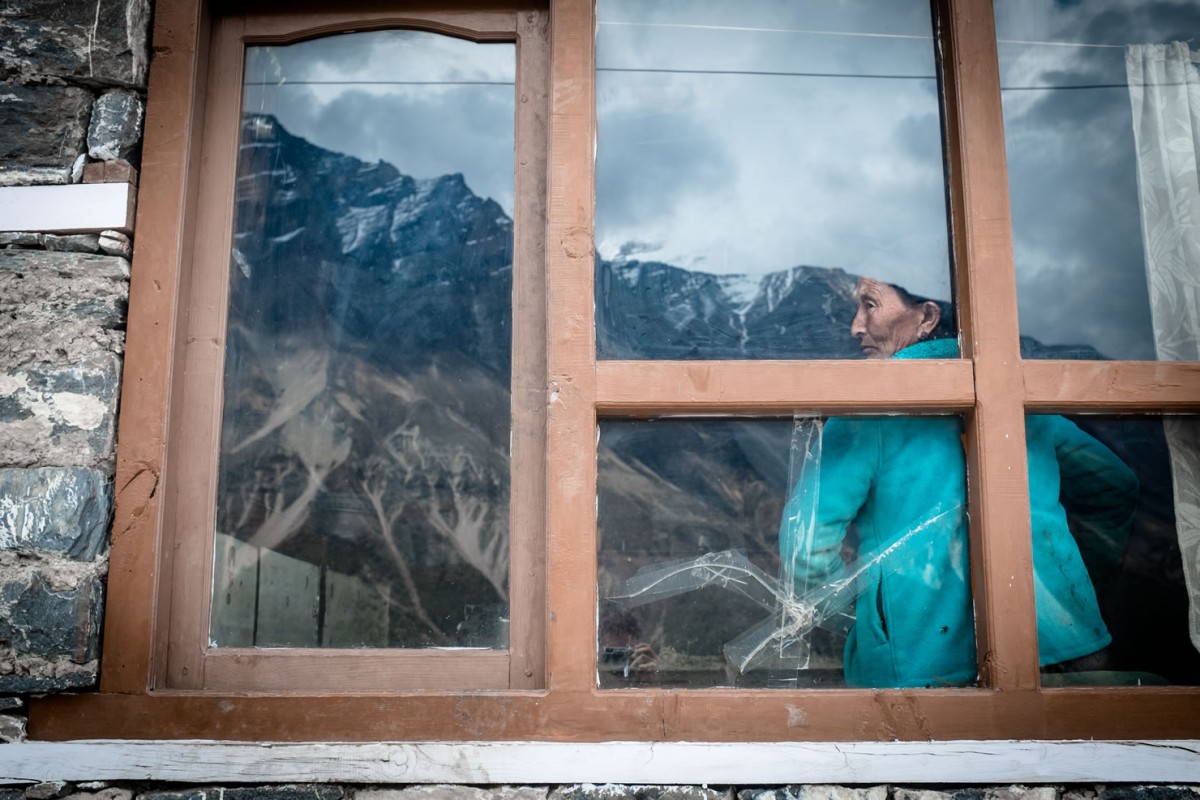
The roads near the town of Ghorka – almost half-way into the first leg of our journey – made for slow travelling. They are anything but smooth, especially on rigid bicycles. The midfat tires on Tavin’s B+ Karate Monkey tend to roll much smoother than their traditional 29er counterpart, however the conversion didn’t fair very well for Tavin. The first time he had touched these tires to dirt was riding out of Kathmandu. Further into our trip, problems started to surface. First chain suck, then chain breakages, and then worst of all his crank-arm fell off the spindle, the spines badly stripped. As we worked on the bicycle, locals would stop, gather and stare silently. On many occasions we would have five or six locals gathered around to watch us wrench on the bike. We found them as interesting as they did us, since many of them were wielding machetes and toting dokos – giant baskets made of bamboo supported by a head-strap. Finally came a solution. A temporary fix rendered his front derailleur useless, the chain wrapped over the biggest front ring, but at least he was able to pedal… sometimes. It wasn’t until we reached the tourist town of Pokhara that we were able to find the necessary parts to fix his Monkey completely.
Still, Pohkara itself made an interesting pit stop. In the 60’s, travellers would come from all over the world to hike the infamous Hippy Trail; where rumors of cheap living, piles of ganja, and kindred spirits were paired with mountain views alongside the gorgeous Lake Phewa. Nowadays, it’s a very different scene. Having grown into the third biggest city in the country, it’s become the hub for crowds of tourists. The only remnants we found left of the Hippy Trail of yesteryear was a slightly chill vibe and several marijuana plants growing in the garden of our guesthouse – where young Nepali men would gather to talk and smoke with its owner. Here, we would hear the younger generations opinion on current Nepali events, government, education, and revolution for the future.
From there, we began to grind our way up the five-day sustained climb to the top of the Annapurna Circuit, where we would cross Thorong La Pass and descend the opposite side. Through each village the children would run out to catch a glimpse of our goofily clad bicycles, after they would shake off their astonishment, their greeting was always the same – “sweet?” they would query. Apparently they are used to fair skinned travelers carrying candies for them. They chased after us, rubbing their hands along our moving tires and grabbing onto our bags, chirping “sweet, sweet, sweet.” Having no sweets we opted to hand out the next best thing, packets of Justin’s Almond Butter. Generally the children were unsure about these packets of creamy goodness but before they could decide whether they liked it or not, we would wave our goodbyes and pedal off slowly uphill.
The climb to Marpha was relentless, winding on into the distance, still two days of climbing remained until our descent. Every bit of effort I had went into spinning my pedals, my lungs on fire and legs absolutely empty, biting my stem. When I would find the courage to look up, not wanting to see the never ending climb above me, Tavin would be cranking away, his massive calves seeming to shine in the sunlight like mine never would. Shit. He didn’t even look tired. He was hardly breaking a sweat as I gasped for breath; I’d been training to race bicycles for the past 5 months while Tavin had been in Utah living the life of a ski bum where he hadn’t touched a bicycle in over half a year, I’d never understand how he did it.
The jeep track led us into the depths of the Kali Gandaki Gorge. The deepest river gorge in the world by some measurements. The gorge separates the major peaks of Dhaulagiri on the west and Annapurna on the east. The Kali Gandaki River Gorge has been used for centuries as a trade route between India and Tibet. Now a dusty jeep track travels the depths while rickety suspension bridges gap each side. Riding bicycles across these bridges sometimes proved challenging, many times the sides of the bridges were too narrow to ride, our handlebars would scrape the sides as the bridge bounced up and down from our weight. Eventually the roads gave way to the round rocks of the ancient riverbed. Bouncing along these slow roads upon my rigid 29er had my teeth rattling.
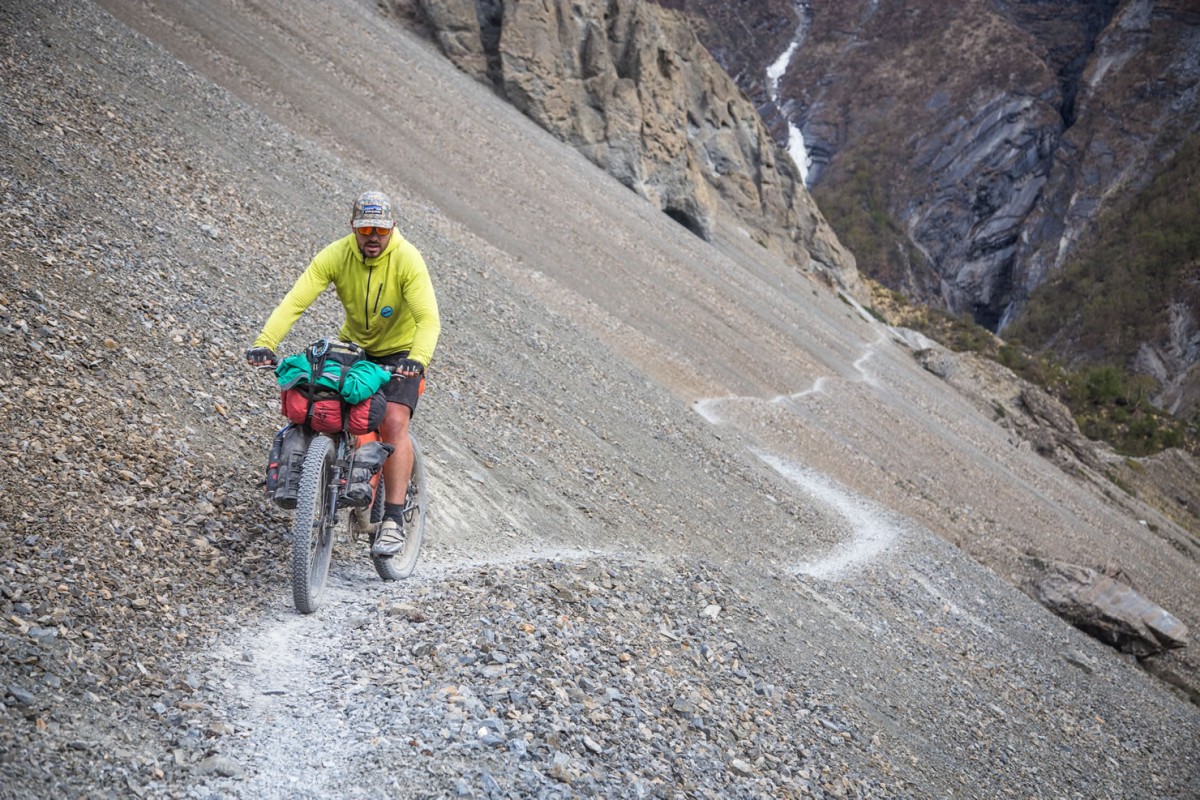
As we rode, my belly grumbled. It was most likely the unfiltered water or the street food that had my stomach in knots. Having digestive issues while bicycling has its obvious disadvantages, the prime one being that I had already messed my chamois three times in the past week due to my illness. As soon as I thought about opening my mouth to complain about my stomach, the road, the rain, being tired, or any of my other numerous woes, I was granted some perspective as we passed an old woman. A giant smile upon her wrinkled face, she wore a heaving doko basket upon her back filled with crushed gravel, supported by a band across her forehead as she wobbled down the road. At that moment I shut my mouth and decided not to complain. If she was happy with her situation, I could be happy with mine. I didn’t really have a reason to complain, even if my shorts were a mess. I was out riding my beloved bicycle in the middle of a beautiful country, suffering electively. Heck I had even spent my entire savings to be out there suffering. I spun on, willing that moment of perspective to memory. From then on I simply attempted to enjoy the bike ride.

The landscapes were ever changing along the jeep track to Muktinath, the last town before Thorong La Pass. It was only days before that we suffered from the tropical heat, then suddenly we were in lush evergreen forests of the temperate zone, and now here we bicycled in the high alpine desert where the yaks roam the famed Mustang Valley. Above 5,000 meters, the climate becomes Nival where there is no human habitation or crops. This is where Thorong La Pass lies, at 5416 meters (17,769 feet). Muktinath, considered a holy town to both Buddhists and Hindus is home to Mukti Kshetra, a popular temple riddled in prayer flags. Prayer flags are used in the Himalaya to bless the surrounding countryside. It is said that the flags originated from Siddhārtha Gautama, The Buddha. Indian Bhikku’s would carry the flags as a way to signify their commitment to peace and compassion.
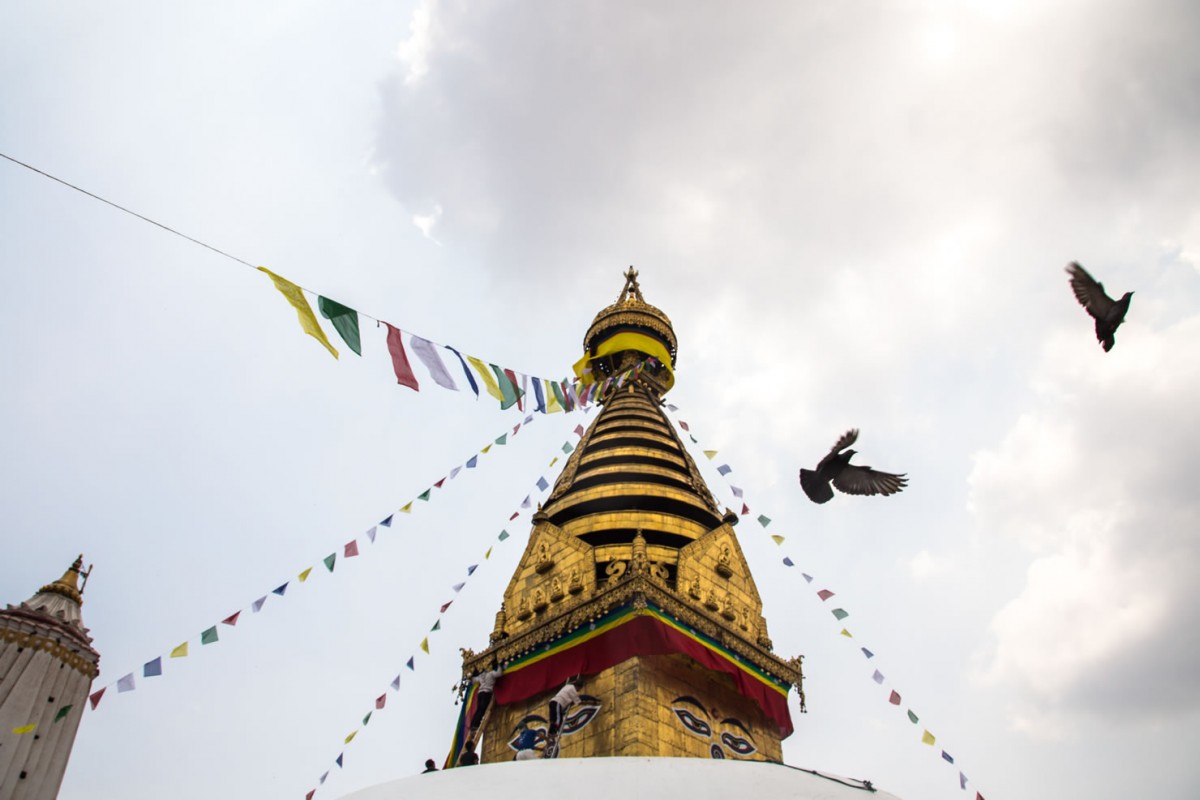
The Annapurna Circuit is a popular trekking destination; tens of thousands hike the route each year, although nearly all of them are travelling the route the opposite direction from us. Whenever we encountered a fellow trekker, they questioned our direction of travel, cautioning us against continuing further, especially with our bicycles. Or they claimed the route was much too steep and there weren’t any teahouses high enough on the Muktinath side of the pass, making for too long a day when crossing Thorong La. Meaning we would have to travel too high, too fast, risking altitude sickness. Their warnings didn’t go unheeded, but we were confident of our route.
Our solution to their warnings was to camp high along the final path to Thorong La Pass, close to 15,000 feet. Our camp was a small ruin found along the trail, walls of stone stacked high atop each other provided an excellent shelter from the vicious winds. As the sun set, the clouds disappeared to reveal our first view of the surrounding peaks. The world’s largest mountains had been lurking in the clouds during our entire trip, hanging just above sight, but now they revealed themselves as the sun set behind them. Dhaulagiri, the 7th highest peak in the world, Annapurna the 10th, and countless other peaks above 6,000 and 7,000 meters At that height, those peaks would be notable anywhere else in the world but here, with Dhaulagiri and Annapurna as their neighbors. The day finally took its toll on our tired bodies and we drifted off to sleep as we lay under the stars in our frost covered sleeping bags.
The air continued to thin on our hike the next morning. Our lungs and legs are not strong enough to pedal these steep slopes at this height, so instead of riding, we push. Altitude sickness can strike anywhere above 8,000 feet and there we were closing in on 17,000 feet, anything more than a slow march would send us into a fit of panting. Slowly we pushed our bicycles uphill, squeezed the brakes, then pulled ourselves up afterward, then we would repeat the process. A few thousand pushes just the same as that, broken up by pauses to catch our ever escaping breaths finally lead us to the top of Thorong La Pass, covered in colorful prayer flags blowing in the wind. This is a moment I had envisioned many times, wondering how I would express myself once I reached the top. Neither of us spoke a word. Eventually we faced each other for a slow but momentous high-five. Nothing needed to be said, we had accomplished the biggest unknown of our journey and now the long climbs were finished and the descents awaited.
As we started to roll down the other side of the pass, I stopped to watch Tavin ride amongst the massive formations around him. This is a landscape that makes a person feel small, the towering peaks lurking overhead, making everything else look tiny in comparison. The trail is surprisingly smooth; being travelled upon for over a hundred years by locals does that to a trail. As we rip down the pass, we put less and less pressure upon our brakes, riding probably too recklessly than we should so far away from medical treatment, but it’s too much fun to care. This is the singletrack we had been waiting for; the path could be seen for miles ahead, cutting through the hillsides, vanishing around the next ridgeline far off in the haze.
Three hours later, and some of the steepest, smoothest singletrack of our lives was behind us, along with sketchy suspension bridges and overwhelming Himalayan views. Stopping in the village of Manang, we found ourselves at a teahouse resting our legs. Our ride down from the pass covered the distance that normally takes hikers 3 days to climb. Over a slice of apple crumble and a bottle of Everest brand beer, we reminisced about the day’s ride. Already the memories of suffering had started to fade, we reflected upon our highs and agreed that we had just finished the single most incredible day of biking in our lives. And in doing so – over the course of this one sublime descent – our time in the mountains came to an end. All that was left was a couple of days riding jeep track to the end of the circuit. From there we would spend the coming week basking in our accomplishment, amongst the countless amenities available in the former hippy capital of Pokhara.

The sense of accomplishment seemed to be a fleeting feeling. Overwhelming at first, it only lasted a short while, not nearly as long as the anticipation that had once filled its place. Lionel Terray’s concept of Conquistadors of the Useless comes to mind. Climbers and cyclists alike are inclined to create audacious goals, pouring every part of themselves into accomplishing them, sometimes even risking life and limb. For what purpose? After all, what we are attempting to conquer usually has no tangible value. Standing atop a peak, cycling a dirt road century, surfing a giant wave. These have no real meaning. Except to the person in that moment, who is able to find his or her own significance. Most of us are aware that we are conquering the useless. But we go anyway. And when we are finished, we are briefly fulfilled. Then, inevitably, we start dreaming of the next adventure, this one grander than the last.
Tips for the Annapurna Circuit
- The Logistics: The Annapurna Circuit takes anywhere from 8-14 days to complete.
- Most travel the route counter clockwise, however we found it ideal to travel the route clockwise.
- The Annapurna Circuit takes anywhere from 8-14 days to complete.
- Most travel the route counter clockwise, however we found it ideal to travel the route clockwise.
- Along the majority of the route options exist for either trail or jeep track, much of the trail is optimized for hiking although much of it is possible to bike excluding the long stretches of stairs.
- ACAP and TIMS permits must be purchased ($40 total) prior to starting the route. They are available in Pokhara or Besisahar.
- Allow time for side trips; Tilicho Lake is highly recommended.
- When to go: October – November: Throngs of tourists will be travelling the circuit. The weather should be ideal and the views spectacular.
- April – May. Spring clears the circuit of snow, although late season brings pre-monsoon showers. The Mountains provide a rain shadow effect that helps deter large amounts of rain. Monsoon season tends to scare.
- The ideal bike: The chunky jeep roads and rocky singletrack demand a good bit of rubber. Anything from 2.2” – 5” tires would do well and have their own advantages on the varied terrain. Plus sized tires are probably the perfect medium. Run with either a rigid or front suspended fork.
The extremely dusty roads wreaked havoc upon our drivetrain. Even when rationing our chain lube we both went through a bottle. Consider using an internally geared hub, such as a Rohloff. - Camping: This is the best part, about every 5-10 miles exists a small village equipped to feed you dinner and give you a (very) firm mattress.
- Rooms are simple and bathrooms are traditional squattie potties.
- We did find ourselves missing the mystique of sleeping under the stars.
- Water: Filter it. You are not immune. Well… you might be, but we weren’t, and we paid the price.
With thanks
Oveja Negra designs and sews everything in the U.S. The sewed up some incredible custom bikepacking bags for us within a couple weeks notice. The frame bags fit like gloves and held up to the rigors of a month long trip. Their snackpack top tube bag fit my Fuji x100s perfectly which was ideal for taking photos without having to leave the bike.
Justins squeeze packs supplemented our diet of rice, lentils, and curry. Vanilla almond butter provided essential calories and fats when our tanks were nearing empty.
Light and Motion’s Solite 250 EX provided lumens when the days ride went longer than expected. The versatile attachments made it possible to secure the light to our helmets, bars, or bags.
Ergon’s SMC-4 saddle kept our buns happy for long and hot days in the saddle. Long rides normally result in numb recreational bits, however with the built in relief channel we had no worries.
Defeet socks provided friction free, form fitting, aerated footwear. They’ve got hundreds of designs from wild to tame, and warm to cool. Our favorites for hot weather were the Aireator’s for their ability to breathe and wick moisture.
Klean Kanteen is determined to produce non-toxic sustainable products to their customers. Their insulated classic was a perfect addition to our water bladders. Anything from hot tea or cool water would stay insulated in our bottles at any given time.
Do you have a bikepacking story to share? Get in touch and let us know about it!
Please keep the conversation civil, constructive, and inclusive, or your comment will be removed.






